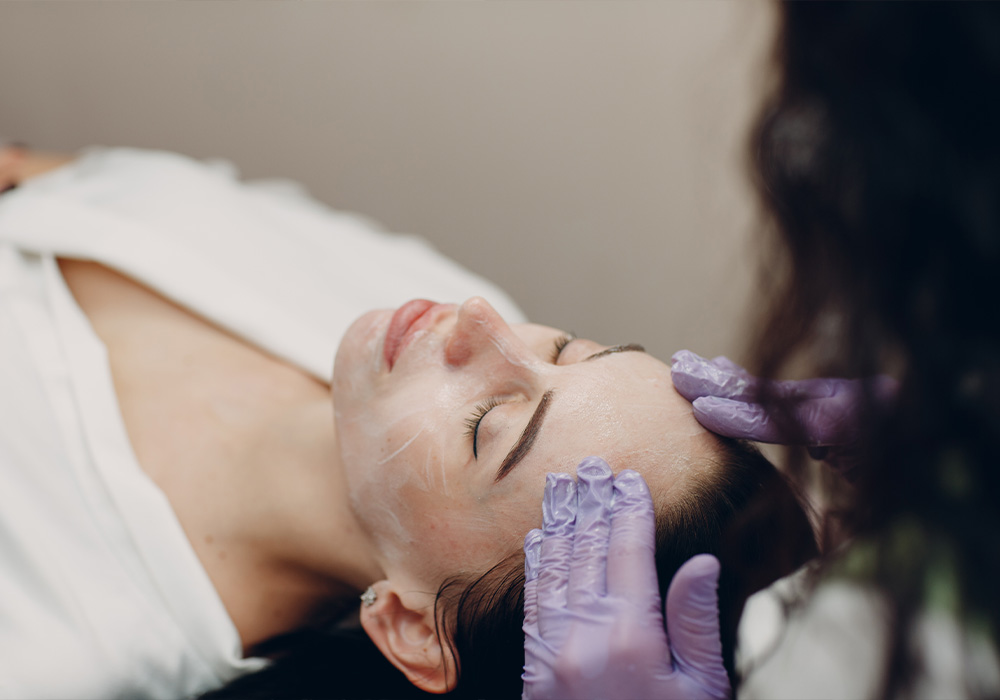If you chase every wrinkle and zap away all of your spots, but something still doesn’t seem right, it may be a matter of unbalanced facial proportions. Without proper proportions, one area can prevent the face from seeming in sync, which is where facial balancing comes into play.
According to Encino, CA plastic surgeon George Sanders, MD, facial balancing involves the strategic placement of fillers or fat injections into volume-deficient areas. “It’s not about flooding someone with filler, but rather looking at their unique face and creating a customized plan.”
The Importance of Facial Balance
The Key to Natural Beauty
Facial balancing is finally getting the attention it deserves, thanks to a greater emphasis on universal facial rejuvenation. Scottsdale, AZ facial plastic surgeon Kelly Bomer, MD says that with appropriately balanced features, a holistic sense of symmetry and harmony results in enhanced attractiveness. Northbrook, IL plastic surgeon Michael A. Epstein, MD agrees, adding that aesthetically beautiful faces have specific proportions and relationships between different features.
“A well-balanced face gives the impression of natural beauty without any obvious signs of cosmetic procedures,” says Kirkland, WA facial plastic surgeon Daniel J. Liebertz, MD. “With the often overzealous use of fillers, many patients now seek a more balanced appearance to avoid an overfilled look.”
Why Imbalance Occurs
There are several reasons why a face may appear unbalanced. “It may occur from a disproportionately sized nose, cheeks or a chin that are under-projected, an oversized forehead, or even ears that may stick out too far or are too big,” Dr. Epstein says. “Or, more commonly, it’s a result of natural aging.”
With age, facial features lose collagen and elastin, and the internal structure weakens, affecting their support. This may result in noticeable asymmetries and an unbalanced appearance.
Typically, younger faces appear more proportional because, as New York facial plastic surgeon John Kang, MD explains, healthy, abundant soft tissue hides bony asymmetries and disharmony. “That soft tissue drape worsens with gravity and laxity, resulting in the face losing its inherent youthful balance. It’s impossible to look younger and reverse the hands of time without addressing balance from the beginning.”
When the face lacks balance, Dr. Liebertz says that the human eye will be attracted to the features that stand out. “For instance, very heavy upper eyelids may make an otherwise youthful and healthy face appear older and tired.”
Can Better Facial Balancing Lead to Better Aging?
Younger faces can also experience a lack of proper facial balance. Dr. Bomer has helped young women in their early 30s achieve better- balanced facial aesthetics from the frontal and side views. “Starting early with balancing procedures can be helpful in the long run, especially when using neurotoxins to adjust the tendency of the muscles, which can pull the face out of proportion.”
Noninvasive facial balancing procedures appeal to a broader subset of people because they are less intrusive than a total overhaul, like a facelift. While Dr. Liebertz says most patients are good candidates for facial balancing, those bothered by noticeable asymmetries or inequivalent proportions appreciate the balancing effects most. The results may also contribute to more streamlined age-related changes.

Filler vs. Surgery: Which One to Choose?
Both fillers and surgery can achieve better facial balance, but do you have to go under the knife? Not necessarily.
“It all depends on the patient’s goals and anatomy,” Dr. Liebertz says.
Different parts of the face respond to different treatments. For example, according to Dr. Kang, fat is often used to accentuate the cheeks, chin, nose, and temples, whereas surgery is preferred for the eyes. “Ultimately, the physician will decide which is best based on factors like the severity of the imbalance, as well as the patient’s condition, response to previous treatments and overall treatment goals,” Dr. Sanders adds.
In addition to skin-related changes, Dr. Epstein shares that there is typically volume loss and sagging, which creates facial imbalances with age. “Nonsurgical fillers can restore lost volume, but surgical correction may be necessary. In these cases, lifting procedures, the placement of facial implants, or fat grafting can be performed to achieve ‘facial balancing.’”
The Feature Factor in Facial Balancing
Proper symmetry and ratios are vital to achieving a well- balanced face, but there isn’t a one-size-fits-all treatment. Sometimes, it may require a combination of fillers, neurotoxins and surgery to balance the face appropriately.
“The size and shape of the eyes, nose, lips, and other facial components should be in harmony with each other, complement the overall face shape, and contribute to overall attractiveness,” explains Dr. Sanders. “The left and right sides of the face should be balanced, which is an important component of an attractive face.”

The Chin
The chin’s role in overall facial harmony and balance is undeniable.
“The chin is the base of a beautiful vase, which provides stability and strength to the foundation of the vase,” Dr. Kang says. “A perfect chin shouldn’t stand out, but rather provide a behind-the- scenes feature that flatters other parts of the face.”
Too small of a chin can accentuate laxity, jowling and poor jawline definition, highlighting the chin-neck area’s obtuseness. On the flip side, too prominent of a chin can make the lower third of the face seem more noticeable. And if the chin recedes, it can cause the nose to appear large and the face to look off balance.
The Nose
A nose that is too big or droops down too far can distract from the frontal and profile views. “From the side, it is more attractive to have balance between the projection of the nose, lips and chin, which we can achieve with injectables or surgery,” says Dr. Bomer.
Dr. Kang adds that reducing a large nasal hump or bulbous tip improves facial balance. “Often, correcting the nose with an injectable nose job—with an option for nasal augmentation surgery later—will bring about balance and harmony.”
The Lips
Dr. Sanders says lip filler can augment the lips to equalize the lower face, but sometimes more chin definition is also needed to create facial balance. “People like the fullness lip filler creates, but some develop a skewed sense of what they look like, yet continue to pursue it, resulting in a face that is off balance.”
The Cheeks
No matter whether filler or fat is used to enhance the cheeks, adding to them can give a more defined appearance when volume is lacking. For some patients, deleting from them, with buccal fat removal, is the key to balance.
The Temples
Sunken, hollow temples can cause the upper part of the face to appear as if it is falling inward. Reinstating lost volume to the temples via fillers can add structure and balance to the face, especially if the face is naturally thin.
The Jawline
Dermal fillers are the easiest way to rebalance a weak jawline, which creates sharper angles to camouflage signs of aging and minimal laxity.
The Eyes
A surgeon has many tools to hide under-eye hollows and shadows, which can detract from good facial balance. In some patients, treating the eyes also requires addressing the eyebrows, which Dr. Bomer says can be made to appear more symmetrical from the front view with fillers and neurotoxins, or a browlift.

















